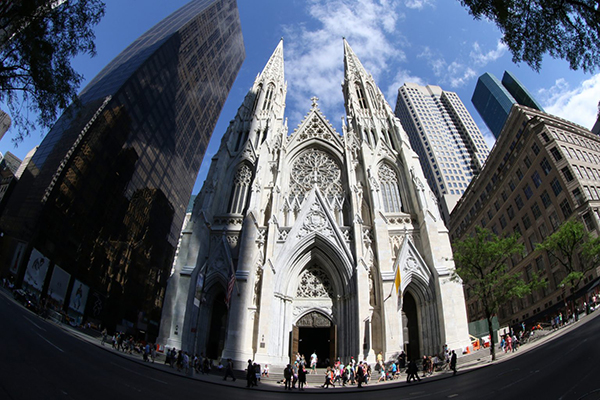
By Christopher White, National Correspondent
NEW YORK – While American religiosity may be in rapid decline, a new study reveals that the United States remains more religious than many other countries and is presently more religious than at many other times in its own history.
Further, the study posits that the social, political, and legal environment in the country has become less hospitable to all religions over the last 75 years and argues that decreased religiosity can be attributed to more secularized education and a decline in marriage.
The study, “Promise and Peril: The History of American Religiosity and its Recent Decline” was released on April 30 by the American Enterprise Institute (AEI) and is authored by Lyman Stone, an AEI adjunct fellow and a research fellow at the Institute for Family Studies.
Stone says that America’s decline in religiosity is not evidence of a change in personal preferences, but rather a number of specific policy choices.
In the realm of education, he notes that the rise of the Blaine Amendments in the 19th century, which prohibited direct government aid to religious educational institutions, greatly contributed to widespread loss of religious influence through schools.
Blaine Amendments, which began as an effort by Protestants to limit Catholic influence on society, specifically through education,“ began as discrimination ended as secularization,” writes Stone.
“Today, they are used as catchall tools for the government at many levels to ensure the secular character of public education,” he writes.
“Research is highly supportive of the idea that more years of education in a religious environment strengthens associated religious commitment, especially for children whose parents are also connected to the same religious body,” Stone told The Tablet.
In the study he notes that this is especially true for Jewish and Catholic families, and that “Catholic schools have been clearly shown to at least boost religious observance among Catholic youth until their 20s.”
Today, the study argues that the generations that attended public schools after the 1940’s “spent much of their life in schools that were far more secularized, and these are the generations during which religiosity has declined.”
As for marriage and family life, the study posits that marriage itself leads to greater religiosity, as does having children – yet Stone links education to a decline in marriage, noting that education takes much longer to complete today, leading to a delay in marriage.
“Increasingly secularized education serves to directly reduce religiosity as schools provide a different set of values and life orientations than parents might,” he writes. “Secondly, as educational enrollment represents an ever-expanding share of young American’s lives, marriage is increasingly postponed.”
As marriage is delayed, he writes, Americans are forming non-religious habits and fewer attend church services.
Prior to World War II, more than 90 percent of Americans identified with one particular religion or another; now it is closer to half. Stone also chronicles a decline in church attendance from 50 percent in the 1960’s to about 35 percent.
Yet despite declines over the last 50 years, which he says is “striking in its speed and uniformity across different measures of religiosity,” he contrasts that with the historical record of the 1780’s at the start of the American experiment where “probably just a third of Americans were members in any religious body, and just a fifth could be found at church on a given Sunday,” arguing that by those standards, America is more religious today than at its founding.
Further, in terms of actually attending worship services in developed nations, Stone shows that only in Israel, Italy, and South Africa are rates of attendance at weekend services comparable to the United States.
Looking ahead, Stone says religious leaders in the United States are at a “crossroads” with shrinking religious attendance and cultural and social headwinds in a climate where “religious interest groups have made political enemies fighting costly battles around issues of sexual identity in particular.”
While Stone says that programs such as school vouchers, changes in tax laws that penalize marriage, and policies that support child rearing could help possibly strengthen attachments to religion, but whether alterations in the policy choices of the past can help reverse the decline of religiosity, remains uncertain.
